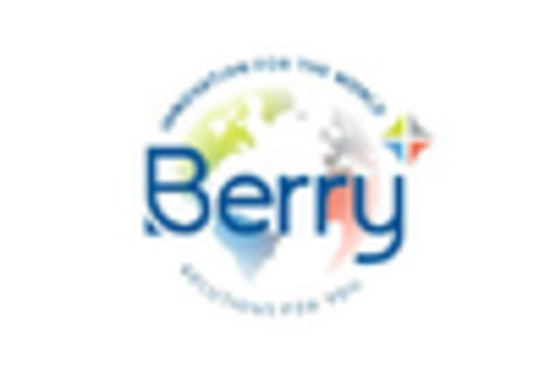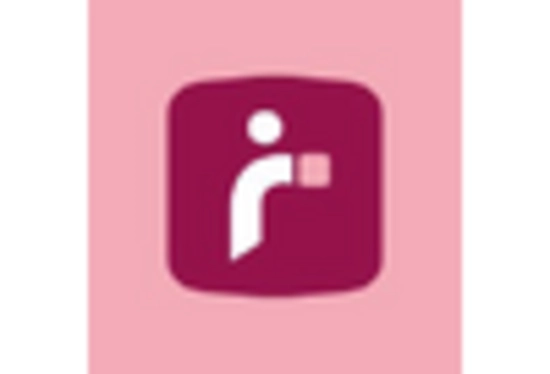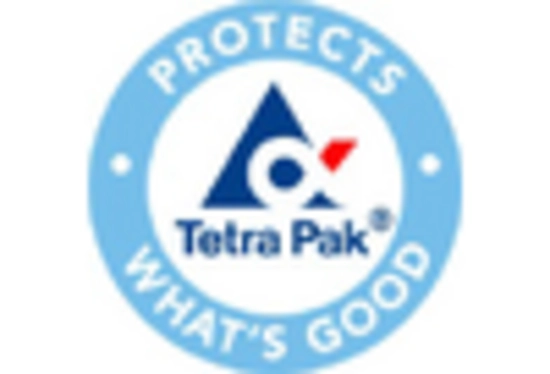Market Share
Introduction: Navigating the Future of Smart Food Packaging
The smart food packaging industry is evolving rapidly, driven by technological advances, changes in legislation and shifting consumer attitudes towards food safety and food waste. Its major players, including leading technology companies, IT service companies and AI innovators, are competing to offer products that combine IoT sensors, artificial intelligence, biometrics and other cutting-edge technologies to improve product traceability and customer engagement. Those companies that have invested in automation and greener solutions have been able to stand out in a crowded market and respond to the growing demand for eco-friendly solutions. Opportunities for growth are especially strong in North America and Europe, where stricter regulations and increased consumer awareness are driving strategic investment. In view of the opportunities that lie ahead in the years 2024–2025, a clear understanding of these trends will be essential for strategic planners and C-level execs who want to capitalize on smart food packaging’s transformative potential.
Competitive Positioning
Full-Suite Integrators
These vendors offer comprehensive solutions that encompass various aspects of smart food packaging, from design to implementation.
| Vendor | Competitive Edge | Solution Focus | Regional Focus |
|---|---|---|---|
| Crown Holdings, Inc. | Extensive global manufacturing network | Metal packaging solutions | North America, Europe, Asia |
| Ball Corporation | Innovative sustainable packaging solutions | Aluminum and metal packaging | North America, South America, Europe |
| Bemis Company, Inc. | Diverse product portfolio | Flexible packaging solutions | North America, Latin America, Europe |
Specialized Technology Vendors
These vendors focus on niche technologies that enhance the functionality and intelligence of food packaging.
| Vendor | Competitive Edge | Solution Focus | Regional Focus |
|---|---|---|---|
| Insignia Technologies | Advanced smart packaging technology | Active and intelligent packaging | Global |
Infrastructure & Equipment Providers
These vendors supply the necessary equipment and infrastructure to support smart food packaging production.
| Vendor | Competitive Edge | Solution Focus | Regional Focus |
|---|---|---|---|
| Graham Packaging Company | Customizable packaging solutions | Plastic packaging solutions | North America, Europe, Asia |
| Constar International Inc. | Specialization in PET packaging | Plastic packaging solutions | North America, Europe |
| Filtration Group Corporation | Expertise in filtration technology | Filtration solutions for packaging | North America, Europe |
| Sysco Corporation | Strong distribution network | Foodservice packaging solutions | North America |
Emerging Players & Regional Champions
- PackTech (USA): a specialist in biodegradable packaging systems, integrated with smart sensors to monitor the freshness of food. The company has just entered into a partnership with a major retail chain and will be offering its products in 500 of its stores. Its aim is to offer consumers eco-friendly alternatives to products from established suppliers.
- SmartSeal (Germany) – The company offers intelligent packaging which, by means of RFID, makes it possible to track and manage the products. It has just signed a contract with a major food distributor to increase the transparency of its supply chain. Its products complement traditional packaging solutions with advanced technology.
- FreshGuard (Australia): Active packaging that controls oxygen and moisture; has launched a trial with a local farm-to-table restaurant; is a niche player compared to larger competitors.
- EcoPack Innovations from Canada develops smart packaging that contains a QR code for consumer engagement and information on sustainable practices. Recently, the company collaborated with a national food brand to enhance the consumer interaction with the product, thereby challenging conventional packaging practices.
Regional Trends: In 2025, the use of intelligent food packaging is increasing in Europe and North America, prompted by the desire for transparency and the demand for transparency. The companies that make them are increasingly specializing in the use of environmentally friendly materials and the Internet of Things, and are able to achieve supply chain efficiency. In the Asia-Pacific region, local players are focusing on the affordability and scalability of smart packaging.
Collaborations & M&A Movements
- Mondi Group and Tetra Pak entered a partnership to develop sustainable smart packaging solutions that enhance food safety and reduce waste, positioning themselves as leaders in eco-friendly packaging.
- Amcor acquired the smart packaging technology firm, SmartSeal, to integrate advanced tracking and monitoring features into their product lines, significantly boosting their competitive edge in the smart food packaging sector.
- Sealed Air Corporation collaborated with IBM to leverage blockchain technology for improved traceability in food supply chains, aiming to enhance consumer trust and compliance with food safety regulations.
Competitive Summary Table
| Capability | Leading Players | Remarks |
|---|---|---|
| Sustainability | Tetra Pak, Amcor | Tetra Pak has implemented renewable materials in their packaging solutions, significantly reducing carbon footprint. Amcor's commitment to 100% recyclable packaging by 2025 showcases their leadership in sustainable practices. |
| Smart Sensors | Mettler-Toledo, Thinfilm | Mettler-Toledo's integration of smart sensors in food packaging allows for real-time monitoring of freshness. Thinfilm's NFC technology enables consumers to access product information via smartphones, enhancing user engagement. |
| Active Packaging | Sealed Air, BASF | Sealed Air's Cryovac brand offers active packaging solutions that extend shelf life by absorbing oxygen. BASF's innovative materials provide antimicrobial properties, ensuring food safety and quality. |
| Traceability | Zebra Technologies, IBM Food Trust | Zebra Technologies utilizes RFID technology for enhanced traceability in the supply chain, improving food safety. IBM Food Trust leverages blockchain to provide transparent tracking of food products from farm to table. |
| Consumer Engagement | Nestlé, PepsiCo | Nestlé's use of augmented reality on packaging enhances consumer interaction and brand loyalty. PepsiCo's QR codes on packaging allow consumers to access nutritional information and promotional content, driving engagement. |
Conclusion: Navigating the Smart Food Packaging Landscape
Approaching 2025, the smart food packaging market is characterised by an intense competitive dynamic and significant fragmentation, with both established and new players vying for market share. The regional trends show a growing focus on sustainability and consumer-centric solutions, driving rapid innovation. The incumbents are taking advantage of their established distribution networks and brand loyalty, while the new entrants are investing in automation and artificial intelligence to improve the efficiency and range of their operations and products. The ability to integrate sustainability into production practices and maintain flexibility in operations will be critical to those wishing to maintain their leadership positions. These capabilities should be prioritised by the companies that wish to navigate the market effectively and take advantage of the opportunities that emerge.

















Leave a Comment